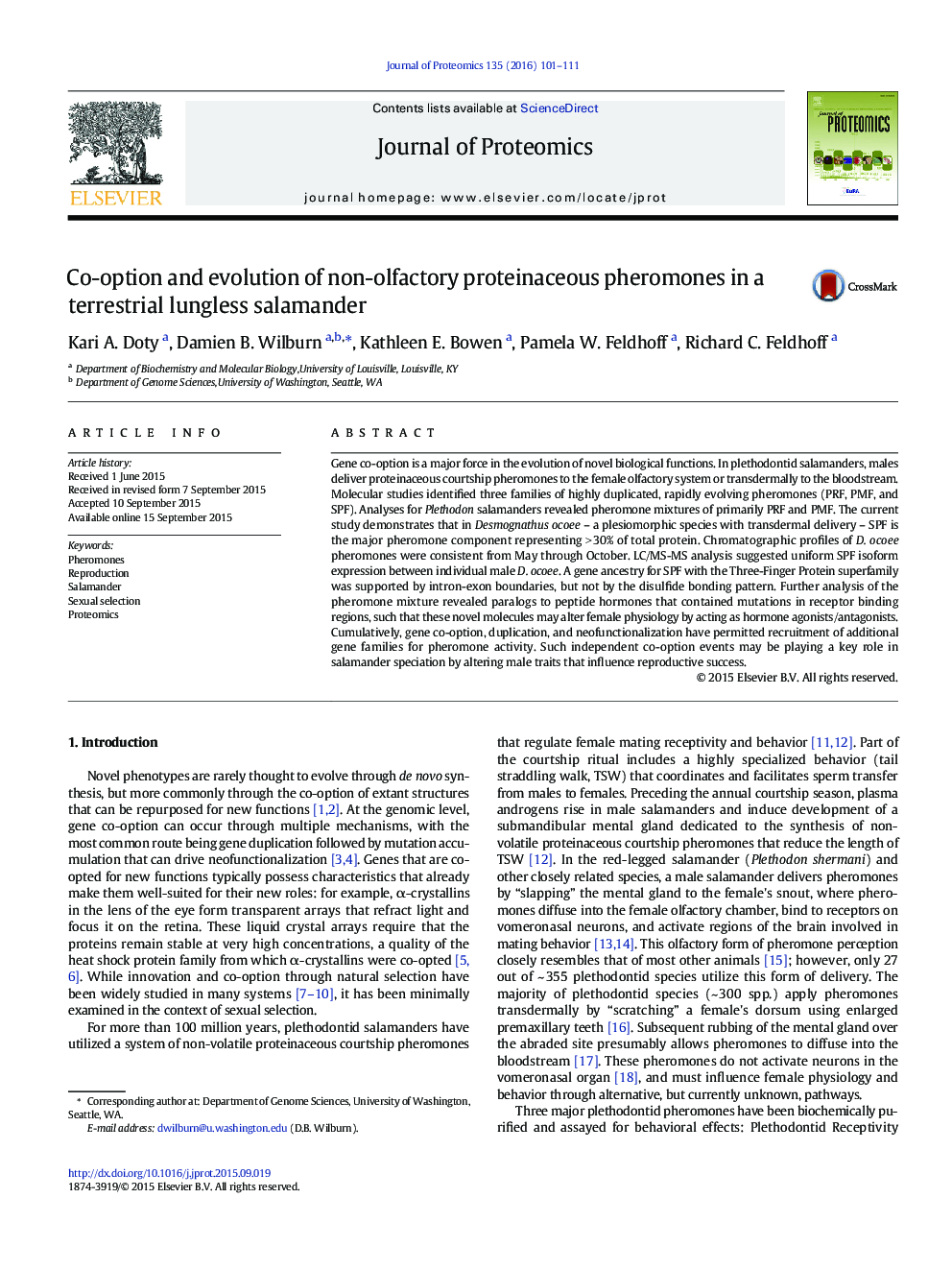| Article ID | Journal | Published Year | Pages | File Type |
|---|---|---|---|---|
| 1225745 | Journal of Proteomics | 2016 | 11 Pages |
•Specific SPF isoforms are the major pheromone component of male D. ocoee salamanders.•SPF is related to TFPs based on gene structure, but with a novel disulfide pattern.•Several co-opted peptide hormone paralogs are part of the pheromone mixture.•Gene co-option in salamander pheromones may be key to speciation and mating success.
Gene co-option is a major force in the evolution of novel biological functions. In plethodontid salamanders, males deliver proteinaceous courtship pheromones to the female olfactory system or transdermally to the bloodstream. Molecular studies identified three families of highly duplicated, rapidly evolving pheromones (PRF, PMF, and SPF). Analyses for Plethodon salamanders revealed pheromone mixtures of primarily PRF and PMF. The current study demonstrates that in Desmognathus ocoee – a plesiomorphic species with transdermal delivery – SPF is the major pheromone component representing > 30% of total protein. Chromatographic profiles of D. ocoee pheromones were consistent from May through October. LC/MS-MS analysis suggested uniform SPF isoform expression between individual male D. ocoee. A gene ancestry for SPF with the Three-Finger Protein superfamily was supported by intron-exon boundaries, but not by the disulfide bonding pattern. Further analysis of the pheromone mixture revealed paralogs to peptide hormones that contained mutations in receptor binding regions, such that these novel molecules may alter female physiology by acting as hormone agonists/antagonists. Cumulatively, gene co-option, duplication, and neofunctionalization have permitted recruitment of additional gene families for pheromone activity. Such independent co-option events may be playing a key role in salamander speciation by altering male traits that influence reproductive success.
